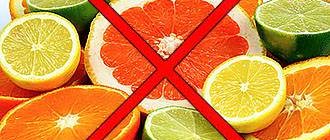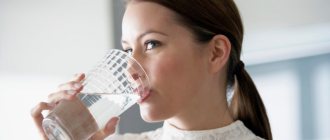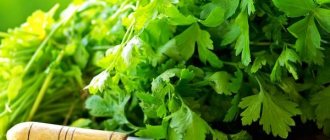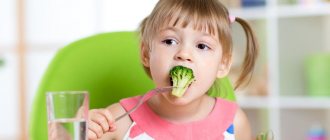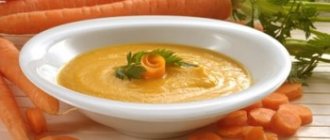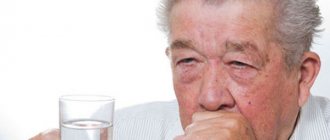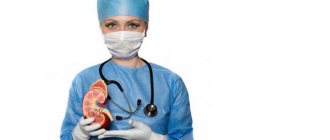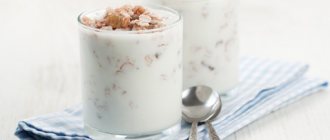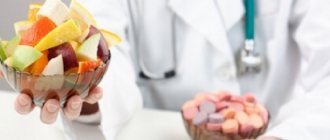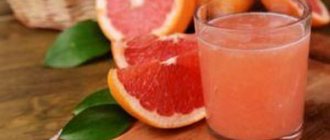Diet indications
Nutritional therapy is still successfully used in medical practice to eliminate symptoms:
- gastritis - inflammatory process of the gastric mucosa;
- colitis - inflammation of the mucous membrane in the large intestine;
- enteritis - diseases of the small intestine.
A dietary diet aimed at restoring the functions of the gastrointestinal tract during the rehabilitation period implies a balanced menu that excludes spicy, fatty and indigestible foods. The daily number of kilocalories is no different from the number of a healthy person. The daily norm is 2800 kcal. Fasting and any restrictions are excluded.
The basis for prescribing a diet is acute and chronic forms of gastrointestinal diseases. During a crisis, the diet is prescribed after intensive therapy, when the acute phase has passed. In the chronic course of the disease, specialized nutrition is recommended for a long period. In case of intestinal diseases, the nutritionist determines concomitant pathologies and, if necessary, prescribes a different table.
Daily intake of important components for diet No. 2:
- 100 g of vegetable and animal fats;
- 60 g proteins;
- 400 g carbohydrates;
- salt 15 g.
The essence of the diet is a diet rich in fiber, proportional heat treatment.
A detailed list of prohibited and permitted foods, steaming them allows a person to adapt smoothly and not suddenly change their usual diet. Table No. 2 allows boiled, stewed, baked and fried food. The only restrictions on fried foods are the elimination of breading during the preparation process and a reduction in the amount of oil.
The products are used finely chopped or ground into a soft paste. Fish fillets are eaten whole, but without the skin. The cutlet mince is ground several times. During heat treatment, 80% of food is boiled or steamed. Overeating is prohibited. Small meals are encouraged - 4-5 times, food cannot be hot or cold, only warm.
Short story
The development of the therapeutic diet table number 2 was carried out by nutritionist and therapist Manuil Pevzner. His wards were people suffering from various gastrointestinal diseases at different stages. He developed many therapeutic diets aimed at the rehabilitation of seriously ill patients in the postoperative period, hypertensive patients suffering from rheumatism, liver diseases, kidney diseases, etc. His research was aimed at proving the relationship between a person’s daily diet and his diseases of various types.
This diet is official, approved by the Ministry of Health in the first half of the 20th century, since then it has not lost its relevance. It is still used in clinics and sanatoriums to treat various forms of gastritis, ulcers, colitis and other diseases.
What should the diet be like?
Baking is allowed from grade 1 and 2 wheat flour. Confectionery products are eaten a day after baking, slightly dried. Nutritionists prohibit some of them:
- buns, cookies;
- black bread;
- hot fresh pastries.
Doctors recommend:
- consume liquid soups, mushroom, and vegetable broths at least once a day;
- meat broth is used only after secondary processing of lean varieties of beef and veal;
- Rabbit, turkey, and chicken breast are allowed in the diet;
- strict restrictions are imposed on pork and lamb;
- Lean fish varieties are suitable - carp, cod, navaga, hake.
Nutritionists also advise avoiding canned foods, marinades and smoked foods.
Cereals
Porridge is cooked in water, but sometimes no more than 30% milk is added to it. The mixture is used in the preparation of cutlets, baked pancakes and other dishes.
Prohibited grains:
- barley;
- corn;
- pearl barley;
- legumes
Other grains are well boiled and finely ground before serving, and millet porridge is eaten once a week.
Plant products
The principle is that vegetables and fruits are eaten only when they are ripe, and such a useful plant as green peas can be present, but only to a limited extent, and if the body tolerates it well. The peculiarity is that pureed, heat-treated (mainly steamed) vegetables and fruits are served in the form of purees, jelly, and mousses.
Excluded:
- peppers (sweet and bitter);
- radish, radish;
- onion;
- cucumbers;
- garlic.
- gooseberry;
- raspberries;
- dates and any fruit with rough skin.
Citrus fruits should be eaten with great caution.
Eggs
When frying, do not allow the formation of a crust, and you can cook goose, chicken, quail - only soft-boiled.
Dairy
The percentage of fat content should be low. Grated hard cheese is allowed. Cottage cheese is not subjected to heat treatment. Food is allowed to be combined with sour cream, and tea or coffee with cream. It is prohibited to consume sharp cheeses that contain nuts and fatty dairy products. The diet may contain yoghurt, and kefir or fermented baked milk is drunk at night.
Beverages
They should be light, warm, non-carbonated. Natural juices are diluted with water. Weak tea and coffee are drunk with milk or sugar. Rosehip decoction is useful - improves digestion.
Completely exclude:
- sparkling water;
- alcohol;
- grape juice.
Additions a and b
For diabetics, 3 diet options have been developed, differing in characteristics and purpose.
It is necessary to consider all three options in order to have an idea and choose the appropriate one:
- Diet No. 9 is the basic diet, designed for daily consumption of 2300-2500 kcal. The protein content in the daily menu is 90-100 g, fat - 75-80 g, carbohydrates 300-350 g. If the patient is overweight, their daily calorie intake is reduced to 1700 kcal, the amount of carbohydrates is reduced to 120 g, the fat content remains the same , but the proteins increase to 110 g.
- diet No. 9 (a) - the diet is intended for patients with a mild form of diabetes mellitus that does not require insulin, but in the presence of obesity of 2 and 3 degrees. The daily calorie intake in this case is only 1650 kcal. The chemical composition is 100 g of proteins, the predominant part of which is of plant origin, 50 g of fats and 200 g of carbohydrates. The menu requires reducing the amount of salt and increasing the consumption of clean water.
- diet No. 9 (b) - the menu is designed for diabetics with moderate and severe forms of the disease that require insulin administration, and the patient’s regimen entails increased activity. The daily calorie intake in this case is 2800-3200 kcal. Every day the patient should consume 120 g of protein, 100 g of fat and 400-450 g of carbohydrates.
The presented indicators are conditional, since when diagnosing diabetes mellitus and related diseases, the patient is prescribed an individual diet with determination of the calorie content and chemical composition of the products.
Table: what you can and cannot eat
| Products | What can you eat | What not to eat |
| Flour products | Dried wheat bread, dry biscuit, savory pastries, crackers, cookies | Fresh butter and puff pastries, pancakes, rye bread, pancakes |
| Meat and poultry | Lean veal, beef, turkey, rabbit, chicken. Milk sausages, diet and doctor's sausages | Lamb, duck, pork, goose. Smoked meats, canned food, |
| Fish | Low-fat fish | Fatty fish, smoked, salted fish, fish roe, canned fish |
| Fats | Ghee, butter, vegetable oil | Lard and other oils |
| Dairy | Yogurt, kefir, cottage cheese, mild cheese, sour cream | Whole milk (only in dishes), cream, ice cream, sharp cheeses |
| Cereals | Hercules, rice, oatmeal | Barley, buckwheat, legumes |
| Pasta | Noodles, pasta | |
| Eggs | On diet table 2, eggs are allowed in almost any form, except hard-boiled | Hard-boiled eggs |
| Spices and seasonings | Bay leaf, cloves, cinnamon, vanillin, citric acid | Pepper, horseradish, mustard |
| Vegetables | Potatoes, beets, carrots, pumpkin, cauliflower, zucchini, tomatoes | Cucumbers, radishes, radishes, peppers, turnips. Marinated mushrooms |
| Fruits | Apples, tangerines, oranges, bananas | Pear, quince. Peanuts, nuts, seeds |
| Berries | Cherry | Gooseberries, raspberries, red currants, dates, figs, grapes |
| Dessert | Honey, jam, pastille, marmalade, marshmallows, jam | Halva, ice cream |
| Beverages | Rosehip decoction, coffee, tea, cocoa (in water), fruit juices | Grape juice, alcohol, carbonated drinks |
The diet can be not only balanced, but tasty and varied.
Prohibited Products
Fatty spicy foods are strictly prohibited.
With diet 2, you should avoid eating foods that irritate the mucous membrane of the gastrointestinal tract. Therefore, legumes, as well as porridges made from millet, pearl barley or barley are not recommended. Ungrinded vegetables will be harmful, as they will be difficult for the stomach to digest. Fresh baked goods pose a danger, especially for butter dough, as well as fatty meats and fish, and smoked foods. Fruits that have a hard skin are prohibited. Chocolate, ice cream, as well as carbonated drinks and alcohol are excluded from the diet.
It is recommended to limit the consumption of chocolate and cream products.
Table No. 2 - menu for the week
| Days of the week | First breakfast | Lunch | Dinner | Afternoon snack | Dinner |
| Monday | Boiled eggs, fruit puree, latte coffee | Fruit jelly | vermicelli soup with lean beef, boiled potatoes with finely chopped herbs | Yogurt, baked apple | Buckwheat with steamed chicken meatballs |
| Tuesday | Protein omelet with grated cheese, coffee with cream and sugar | jelly | Tomato soup, mashed potatoes | Tea, drying | Boiled rice with stewed fish |
| Wednesday | Semolina porridge with dried apricots, coffee | Baked apple | cream soup with cereals and toasted white bread | Strawberry jelly infused with rose hips | Stewed vegetables with boiled veal |
| Thursday | Milk sausage, fried eggs, coffee | Fruit juice | Fish soup with bread | Semolina pudding, tea | Steamed chicken cutlets with vermicelli |
| Friday | Oatmeal with milk, tea or coffee | Baked apple | Beetroot soup with vegetable broth | Marmalade, tea | Fish cutlets in sour cream sauce with rice |
| Saturday | Boiled milk sausage, soft-boiled egg, coffee | compote | Creamy chicken soup with cauliflower | Tea with honey and dried cookies | Stewed cod with carrot puree, fruit jelly |
| Sunday | Sandwiches with cheese, coffee | Berry syrup | Oatmeal pickle | Baked pear | Boiled noodles with minced meat, juice |
Nutritionists recommend drinking purified water 15-20 minutes after meals during the day, and being content with a glass of kefir at night. Salt is used in limited doses. Strict adherence to the diet promotes rapid recovery of the body.
Therapeutic diet is one of the most effective forms of medical influence on humans. A gentle nutritional regimen can restore the normal functioning of internal organs. This type of table is one of the most diverse types of therapeutic nutrition.
Basic principles
The effect of treatment table 2 lies not only in the use of permitted foods and the exclusion of harmful foods, but also in rational heat treatment. There are general principles (characteristic of all therapeutic diets) and special ones (features of a specific diet, in this case, table number 2).
General principles of therapeutic nutrition:
- fatty, fried, spicy foods are excluded;
- consumption of simple carbohydrates is reduced;
- a fractional principle is observed: food intake occurs at regular intervals, 5 times a day;
- You should chew your food thoroughly, this will allow the food to be better absorbed and not linger in the stomach.
The special principles of diet table No. 2 provide for compliance with the recommended energy value of the diet in the range of 2,800-3,100 kcal. The total weight of food consumed should be 3 kilograms.
It is necessary to prepare a daily diet based on the chemical characteristics of the products:
- about 400 grams of carbohydrates should be supplied in one day;
- 100 grams of fat;
- 100 grams of proteins (of which 60% are animal proteins and 40% are vegetable proteins);
- no more than 10 grams of table salt;
- water – 1.5 liters per day (liquid should not be drunk with meals).
Products allowed for consumption can be stewed, baked, boiled. The meat should be minced with a meat grinder, blender or finely chopped. Puree vegetables that are high in fiber. From berries and fruits - compotes or jellies. Soups should not be hotter than 60 °C, main courses - less than 40 °C.
Diet number 2 for gastritis should be followed for a long time. If the patient, even in the absence of symptoms, decides to indulge in foods from the list of prohibited foods, there is a high probability of exacerbation of the disease. The absence of pain or severity of other signs of gastritis does not mean that recovery has occurred. Only a doctor can cancel or change the diet after a complete examination of the patient.

